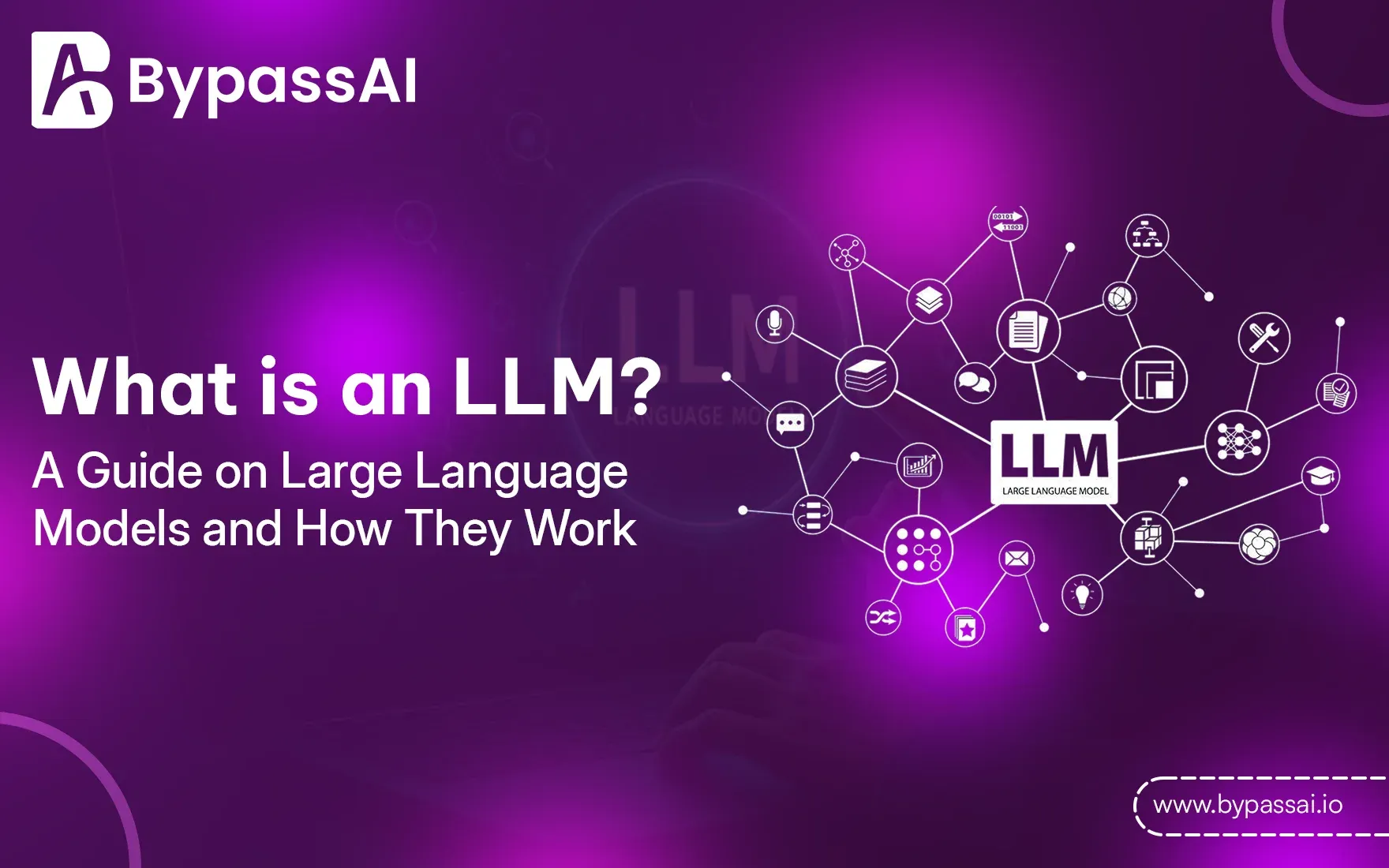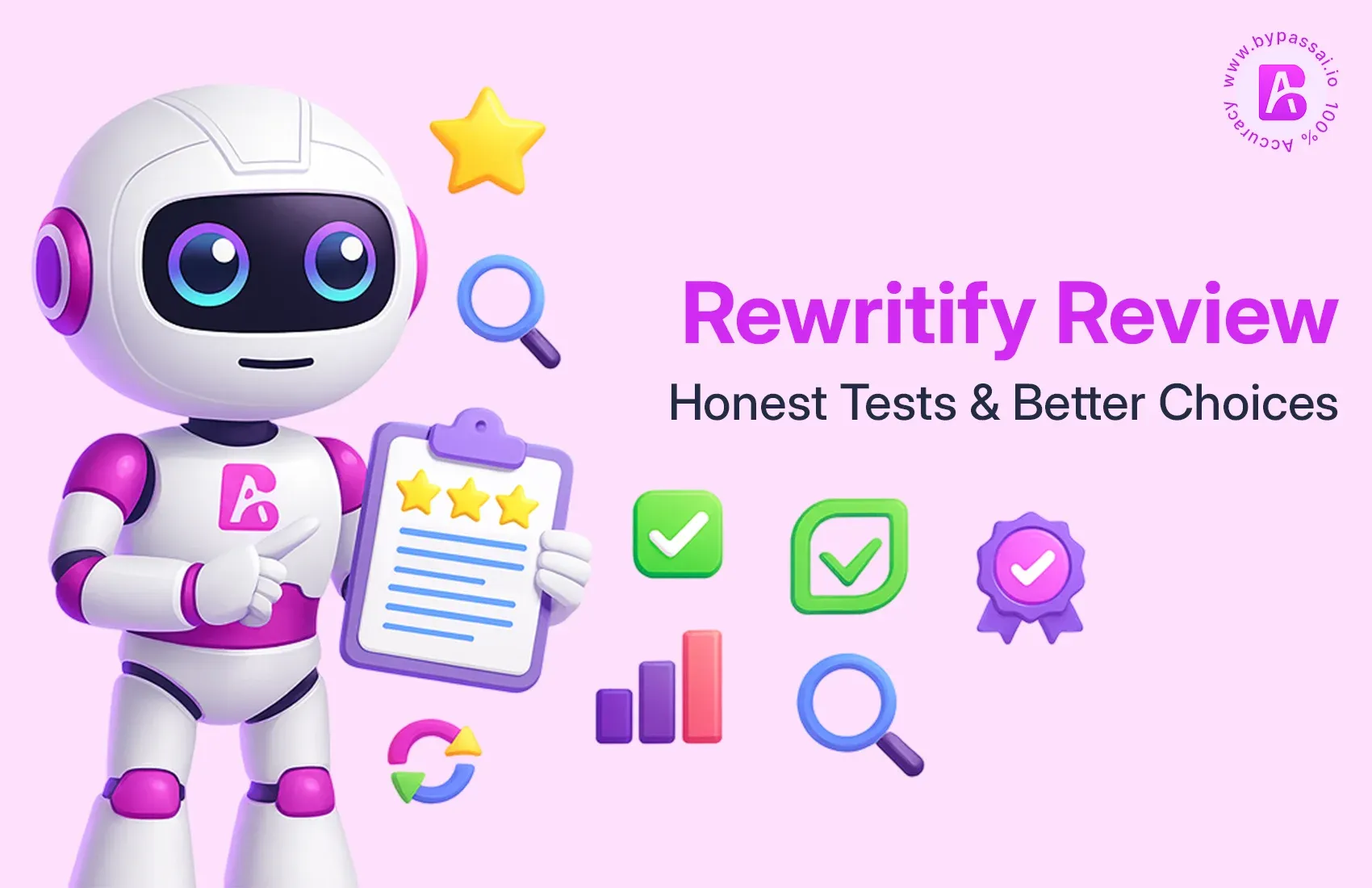Sign In
Welcome to Bypass AI! Sign in to continue your exploration of our platform with all its exciting features.
Forgot Password?
Don’t have an account ? Sign up
Sign Up
Embrace the Future with Bypass AI! Sign up now and let's rewrite the possibilities together.
You have an account ? Sign In
Enter OTP
We’ll send you an OTP on your registered email address
Back to Login
Forgot Password
We'll Send You An Email To Reset Your Password.
Back to Login
Enter OTP
We'll send you an email to reset your password.
Back to Login
Confirm Password
Please enter your new password.
TABLE OF CONTENTS
What is a Large Language Model (LLM)?
History and Evolution of LLMs
What are LLMs Used For?
How Do LLMs Work?
Types of LLMs
Key Components of an LLM
Top Large Language Models (LLMs) in 2025
Use Cases of Large Language Models
Conclusion
FAQs
Large Language Models (LLMs) are in the news and on the web constantly now - from supporting AI chatbots to helping businesses automate their content, emails, and even customer service. But what are LLMs? There has been a long history of an individual typing a question to a chatbot or requesting a clever summary as an AI representation of the text provided. So, in this guide, we want to dig deeper into what LLMs are, how they work, their function, and finally, why they have been so critically important lately.
What is a Large Language Model (LLM)?
In simple terms, a large language model (LLM) is an AI that has been created by using volumes of text to comprehend, produce and engage in the human language. LLMs are great at completing a sentence, translating language, summarizing large volumes of text, producing computer code, and conversing in a human-like fashion. An LLM is an instance of the larger funnel of natural language processing (NLP). NLP ranges from the re-emergence of language to creating systems to comprehend, communicate or write human languages.
Basically, they leverage very advanced neural networks - usually Transformers - to model language and conversations with respect to styles and semantics. A big stage, the more data the language model has to draw from, the stronger its developed ability to predict the next word or phrase in a sentence.
History and Evolution of LLMs
Language models aren’t new - they’ve been around for decades. More importantly, in 2017, with the Transformers introduced through the paper "Attention Is All You Need," the tide turned entirely on its head. Transformers shifted the entire focus of training by enabling the language model to compute the relation of words with ejection across whole sentences or paragraphs.
OpenAI, Google, and Meta furthered training of larger, more powerful models thereafter. Two of these milestones having been:
GPT-2 (2019), the first really impressive language model by OpenAI capable of producing almost coherent text.
GPT-3 (2020) upped the scale to 175 billion parameters.
BERT (Google): Introduced bidirectionality for a better grasp of context.
GPT-4 (2023): Better at reasoning, multilingual, and provides a more human lateral collocation.
Now LLMs such as GPT-4o, Gemini, Claude, and LLaMA 3 are setting new grounds for AI.
What are LLMs Used For?
Due to adaptivity to the use of technology, LLMs can be used in a broad range of industries. The application areas with the most impact of LLMs are as follows:
1. Content Creation
LLMs are being utilized by writers, marketers, and developers in the drafting of articles, blogs, or emails and social media communications. These tools, in most cases, have the capability of decreasing the time to generate content as well as increasing consistency.
2. Customer Service
With the advent of this LLM-driven chatbots, customer questions are answered at a tremendous pace, with human-like responses. Support can be provided all day, every day, without a single human agent, in every interaction.
3. Programming Assistance
Tools like GitHub Copilot leverage LLMs to help developers by writing or completing code, finding bugs, or proposing better options.
4. Translation & Localization
LLMs allow for almost-human accuracy translations, which would effectively close the gap of the potential for language differences.
5. Medical and Legal Insights
In regulated industries, LLMs can support professionals by analyzing large datasets, summarizing research and drafting reports or documentation.
6. Education & Tutoring
AI tutors operating on LLM are technicians that can explain difficult concepts but also provide quizzes and feedback tailored to specific learning styles.
How Do LLMs Work?
To truly understand LLMs, let’s explore their core functioning. LLMs are trained using deep learning techniques on gigantic datasets containing books, articles, websites, forums, and more. Through this training, they learn statistical relationships between words and phrases.
Here’s a simplified version of the process:
- Tokenization: Text is broken down into tokens (words, subwords, or characters).
- Training: Using neural networks (especially Transformers), the model learns to predict the next token in a sequence.
- Fine-tuning: After pre-training on general text, models are fine-tuned for specific tasks like writing emails or answering questions.
- Inference: When a user inputs text, the model uses its learned patterns to predict and generate a relevant, human-like response.
This ability to predict the next word so accurately is what gives LLMs their intelligence.
Types of LLMs
LLMs come in various sizes, architectures, and types of usage. Some are general-purpose, while others have been tuned to perform specific tasks. Below is a quick overview:
- Autoregressive LLMs: These predict the next word/token in a text string based on the previous words/tokens (such as the GPT models).
- Masked language models: These predict the missing words in a sentence (such as BERT).
- Multimodal LLMs: These are capable of processing textual input along with images, or audio (such as , GPT-4o, Gemini).
- Instruction-tuned LLMs: These LLMs have been tuned to follow specific instructions (for example, Claude, ChatGPT). Fine-tuned to follow instructions more accurately (e.g., Claude, ChatGPT).
Key Components of an LLM
Understanding the major components of a large language model would then remove the major mystery of how they function and here they are:
1. Training Data
The nature of the data is very important, this would be books, news articles, code repositories, conversations, forums, etc. more variation and more quality of data = performance.
2. Neural Network Architecture
Now most LLMs are Transformer based architecture that use self-attention mechanisms that balance the impact of each word on the next in a sentence.
3. Parameters
The weights are learned weights in the neural network. The larger the model eg. GPT-4 is in some cases uninterpretable since it is contained in its trillions of parameters.
4. Tokenization System
The first step for the model will be tokenization of the text. The way it is tokenizes will affect accuracy and performance.
5. Embedding Layers
This would convert the token into a dense vector, which will allow the model to build relationships between different tokens.
6. Positional Encoding
Since the model lacks an intrinsic understanding of word order, positional encoding helps the model keep track of the order of words in a sentence.
Also read this article : What is ChatGPT?
Top Large Language Models (LLMs) in 2025
Let’s take a deeper look at the most advanced LLMs making waves in 2025.
1. GPT-4o by OpenAI
The newest flagship model from OpenAI, which of course is referred to as "Omni," because it can generate and combine these capacities across text, image, A/V, functions, and materials is the GPT-4o. GPT-4o is a two way multimodal system over previous models that were limited to text or text + images. GPT-4o allows users to interface directly with it in voice, visual, or text format, creating vast potential uses for virtual assistance, accessibility, and even robotics.
Probably "the best" feature of GPT-4o is the speed, cost and quality trade off. This system runs faster, and cheaper than GPT-4 Turbo, all while, improving enhancements for the systems contextual retention and human-like responses. Especially with the api integrations and ChatGPT promenades, the GPT-4o is slowly emerging as one person's favorite GPT.
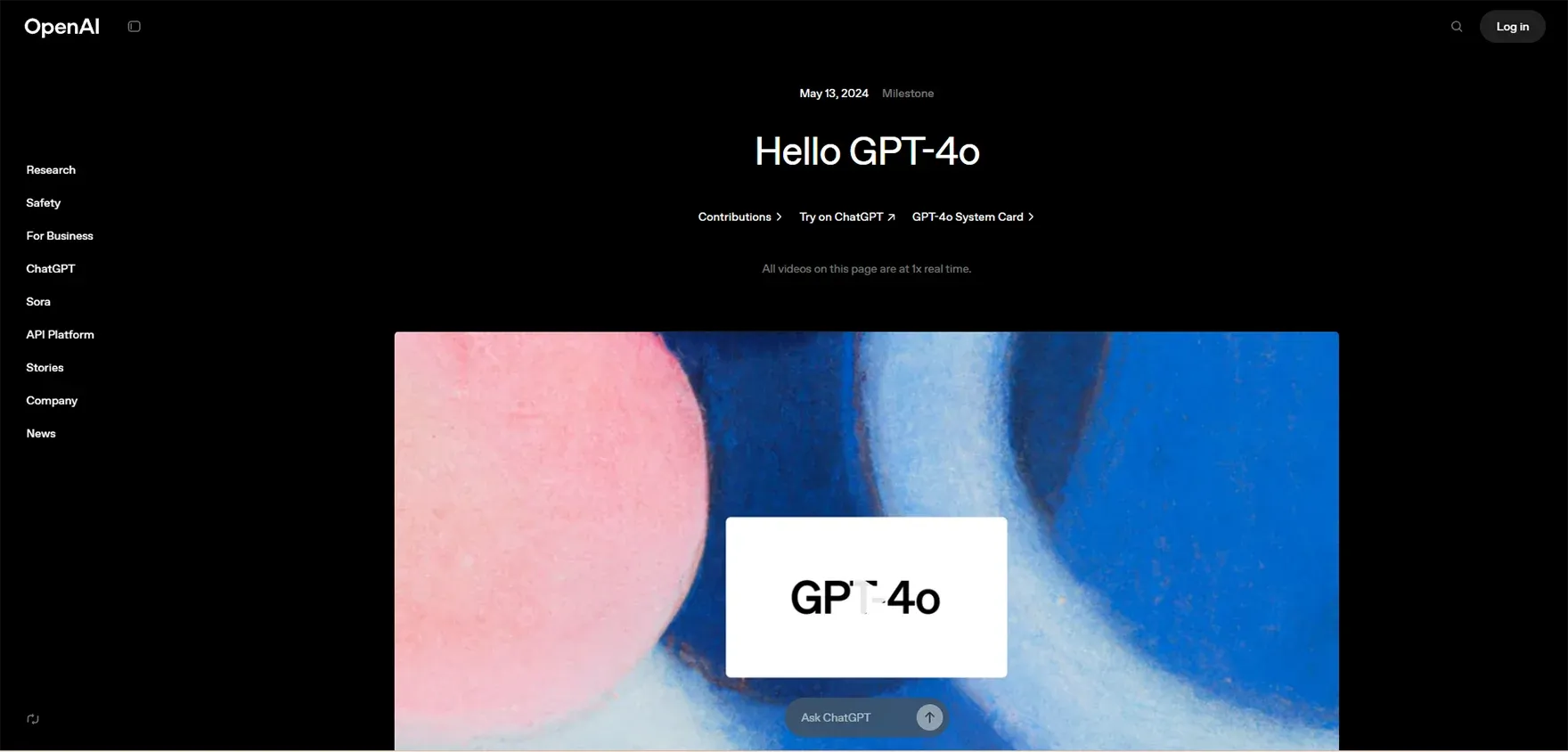
2. LLaMA 3 by Meta AI
Meta's LLaMA series (Large Language Model Meta AI) achieved new heights with LLaMA 3. LLaMA is focused on being open-weight - it provides an option to closed-source LLMs like GPT and Claude. The research world and developers have felt a sense of trust and transparency with LLaMA 3 because it allows customization fine-tuning either for academic or creative need, or an entire business need.
LLaMA 3 has different sizes (8B, 70B, etc.), ensuring a lightweight deployment on edge devices as well as heavy-duty work on cloud computing. With Meta focused on responsible development around their AI branding (like Instagram or WhatsApp), LLaMA 3 has become a trusted entity in open-source LLMs.

3. Gemini by Google DeepMind
Gemini - Google's next giant step in giant language model temperament. Gemini is built on top of DeepMind's existing architecture for AlphaCode and AlphaFold, but with its base model being a transformer-based large language model. Gemini is most remarkable for its reasoning, multi-step problem solving and factual correctness. It is also integrated interoperably in Google's office tools (Gmail, Docs, and Sheets) and will impact productivity for millions of users quickly.
One of the key features of Gemini was the contextual memory, where the system remembered previous user interactions and provided highly personalized responses along those lines upon the user's later sessions with it. Gemini had a nice feature of being able to support multiple languages reasonably well and could generate response with reference to real time facts.
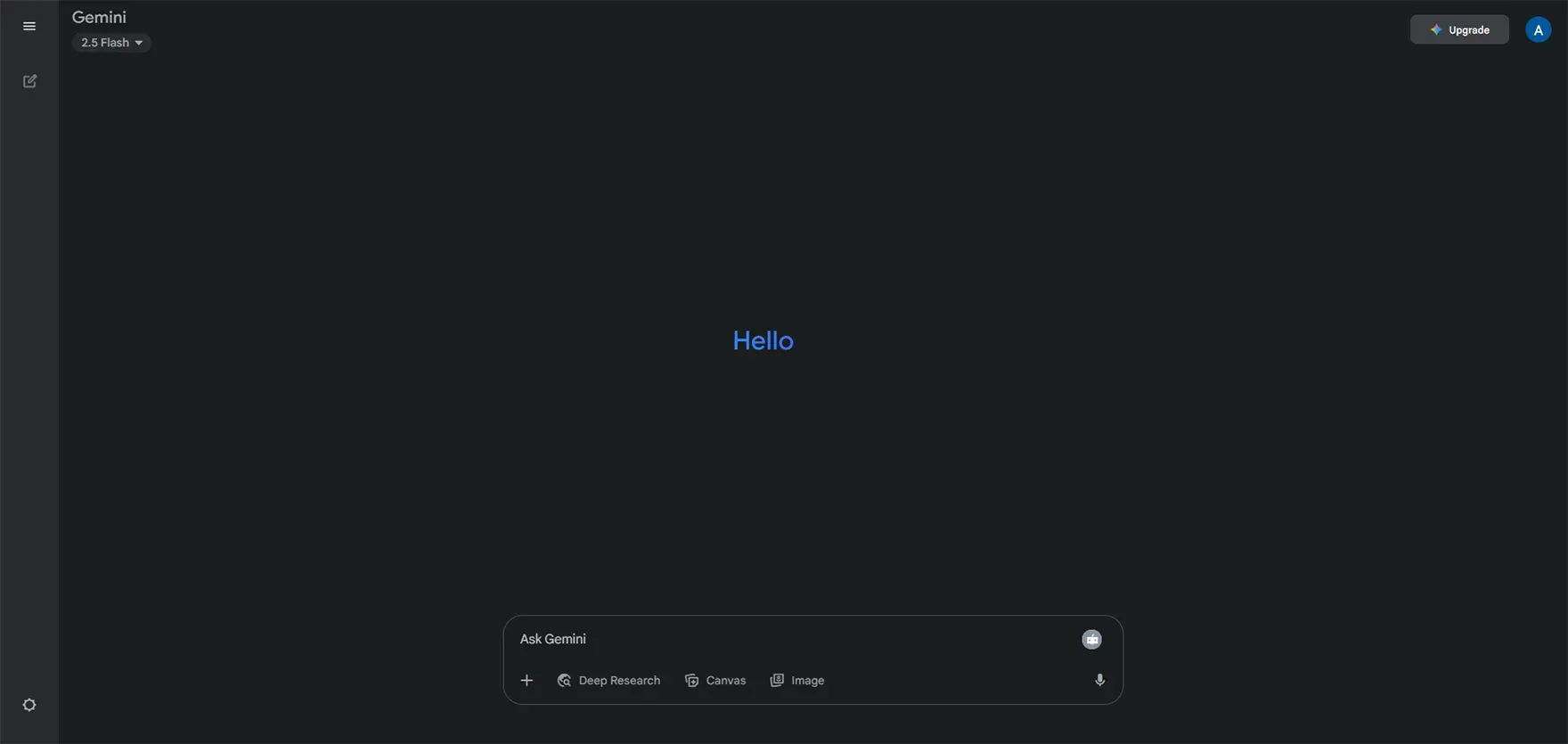
4. Claude 3.5 by Anthropic
This AI is named after Claude Shannon and, of course, stresses ethical AI and a safety-first alignment. Claude 3.5 has a calm, clear, and accurate manner of responding. This makes it especially useful in customer service, law, and education, since it is context-aware and absolutely reliable in sticking to hard guidelines.
The use of Constitutional AI by Anthropic in Claude models helps minimize hallucinations and ensure the model behaves within responsible boundaries. It is also made more resistant to prompt manipulation than the older model.
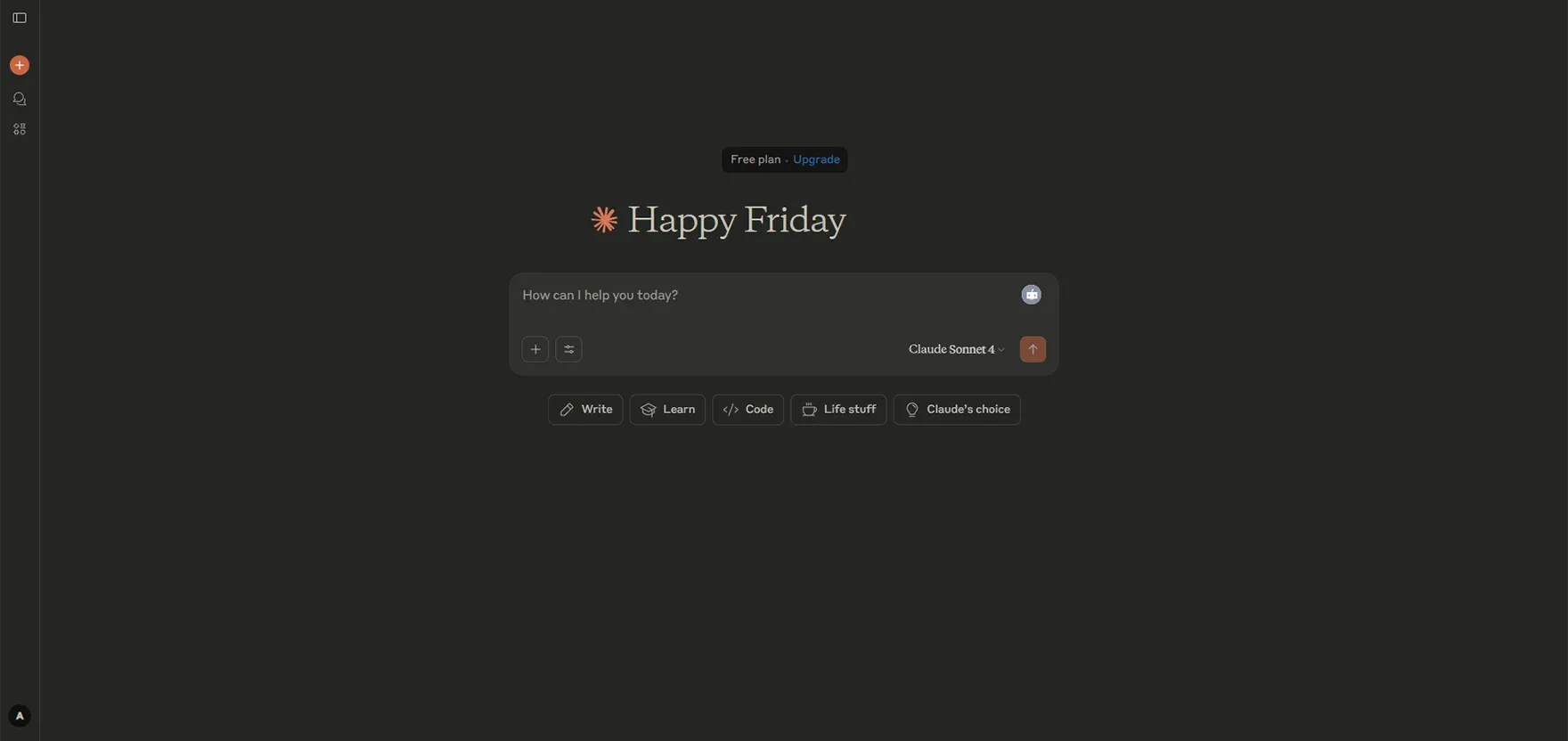
5. Grok 3 by xAI (Elon Musk’s AI Venture)
Grok 3 is the latest in xAI's effort to produce an AI that understands the universe. Grok is tightly integrated with X (formerly Twitter) to deliver witty, opinionated responses on current social media trends. In a more humorous way, Grok puts forward cultural insight and fluid conversations that few other models can offer.
Currently, Grok's real-time installation with user data and trending topics provides a fun first experiment in the interplay between AI and human emotion and current events.

6. Falcon 180B by TII (Technology Innovation Institute)
Falcon 180B is among the largest open-source LLMs in the world. It has been trained with over 3.5 trillion tokens. This makes its ideal application in complex tasks involving text generation such as code synthesis, translation, summarization, and long-form storytelling.
With an open license, researchers are able to thoroughly study and customize the model if needed. This means the Falcon model will find its home in academia as well as in developing international areas of AI research.

7. DeepSeek R-1
A less-established company, DeepSeek R-1 distinguishes itself largely in how it handles reasoning tasks. The Heart of the Machine which remains one and impatient is a unique multi-token prediction mechanism which allows it to look ahead in different possible futures, in contrast to simply being locked into one reality. This yields deeper branching logic, superior coding capabilities and even more competent mathematical problem solving.
As companies continue to try developing in-house models, DeepSeek R-1 has a powerful combination of speed and performance that competes with the household names.

Use Cases of Large Language Models
Large language models are much more than just chatbots. Their applications in the real world are expanding and become quite prominent:
1. Customer Support Automation
LLMs create AI chatbots that provide immediate responses to customer queries. Unlike most scripted bots, LLMs can recognize subtleties and provide human-like answers. The businesses benefit because they save time and the opportunity to offer 24/7 support without the need of hiring someone to sit at their desk all night long.
2. Content Creation and Copywriting
From generating political-oriented posts to creating written descriptions for products, LLMs are helping content marketers and content managers make more content and make content quickly. Many SEO tools use LLMs now to create keyword rich, high-performing content.
3. Legal Document Drafting
Law firms are using LLMs to develop contracts, NDAs and agreements through templates and client-based requirements. And while human review/service is still very much needed, LLMs are reducing the draft time by more than 60%.
4. Programming and Code Generation
LLMs like Codex and Gemini can code in Python, JavaScript, and others. Their developers go a step further because they can debug; they will always (for the most part) help fit in a function or clarify a code. In a sense, they are best described as a pair-programmer.
5. Education and Tutoring
Outside the user and regulator roles, instructors serve as tutor, discourse on topics, simplify the language, assist in developing quizzes or study notes from the studied topic, and perhaps delineate a level of depth and tone in their explanation based on the learner.
6. Translation and Localization
Today's LLMs support over 100 languages. They often do more than translate words. They understand cultural context - this localization helps streamline accessing global markets much easier.
7. Healthcare and Medical Research
Doctors utilize LLMs to summarize research, suggest potential diagnoses based on symptoms, or produce discharge summaries. They ease paperwork and allow more time for patient care.
Conclusion
They have transformed from an industry buzz word to being a technology revolution. These large models do not always have us working under lifted, but they are fundamentally changing the way we write, communicate, support customers, teach, and even do medical research. There will be so much more potential to develop into terms of innovation and automations as these models become larger, combining many more modalities, and being made safer and accurate.
To the developer, marketer, educator, or business leader, the real value you should be educated in is understanding and responsibly using LLMs. By 2025, the artificial intelligence powered year, the use of LLMs will not be a tech decision alone, but rather a strategic one.
FAQs
1. What does LLM mean in AI?
LLM means Large Language Model. LLM's are a type of AI that are trained to understand and generate human language.
2. What is the difference between LLM and generative AI?
LLM is a type of generative AI that is specifically about language. Generative AI subtracts LLMs and adds models for images, music, and video.
3. Are large language models safe?
Due to alignment efforts, they are becoming increasingly safe, however, there are inherent dangers like misinformation and bias.
4. Can I use LLMs in my business?
Absolutely! these can be implemented for customer interactions, marketing, analytics and so on.
5. What are the limitations of large language models?
While LLMs do offer many advantages, with soundness and reliablity comes certain boundaries. For example, in addition to large amounts of power and data, LLMs can produce wrong and biased information; they can not reason or understand, and do not--by their design--update real-time context, and thus accuracy will be limited in nearly domain-specific range, unless in a properly fine-tuned manner.

